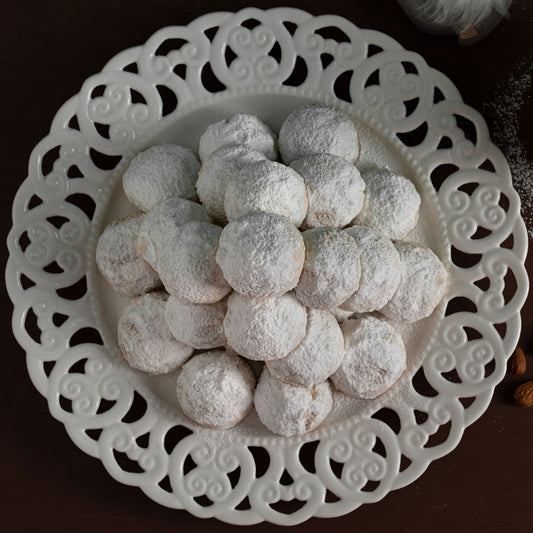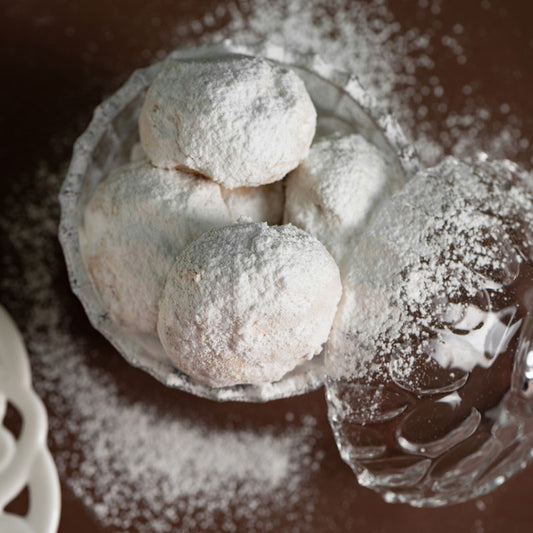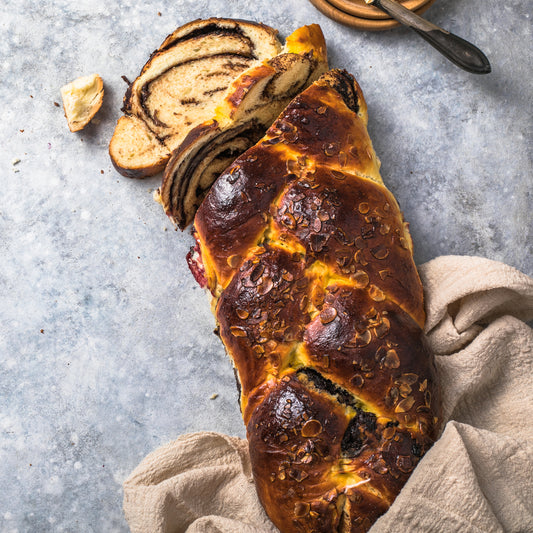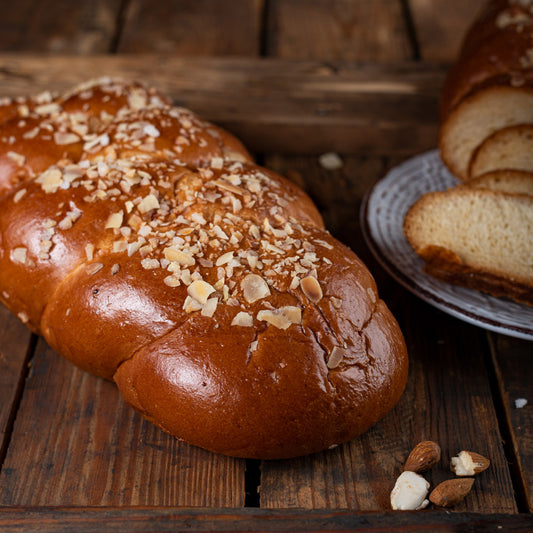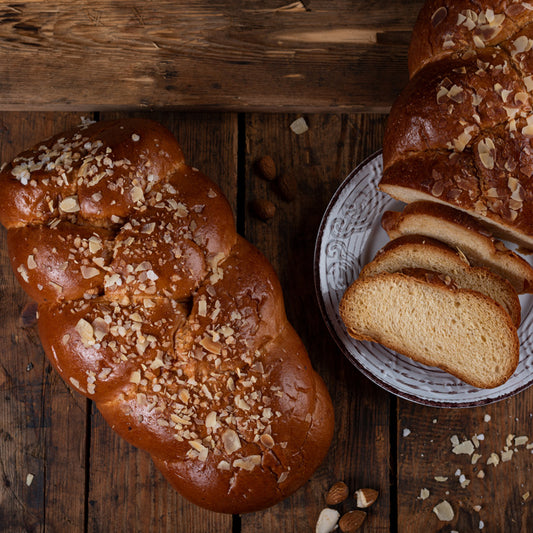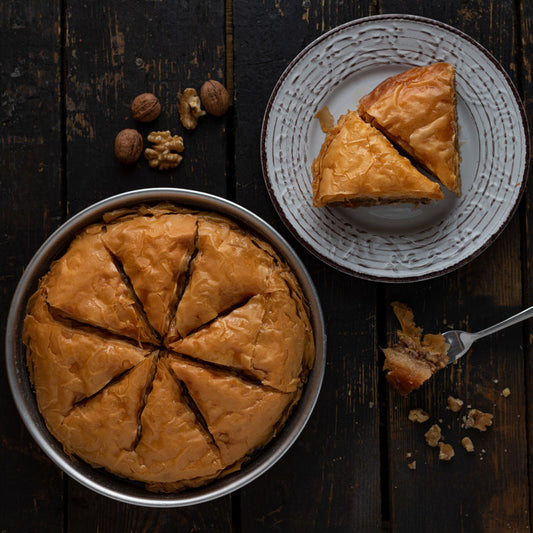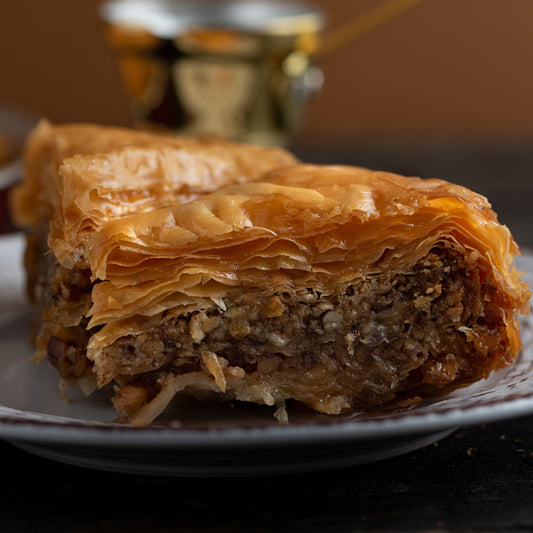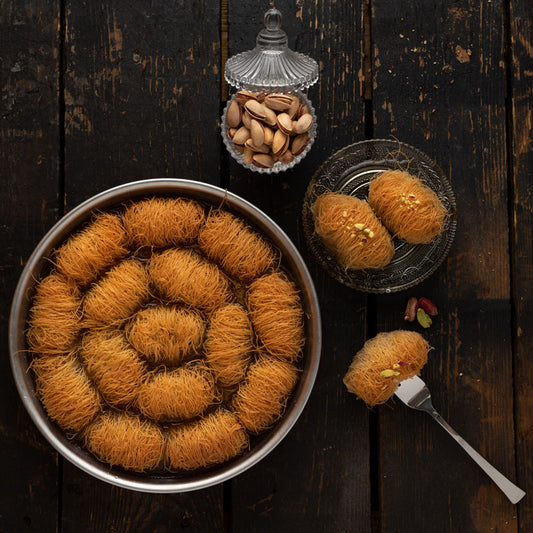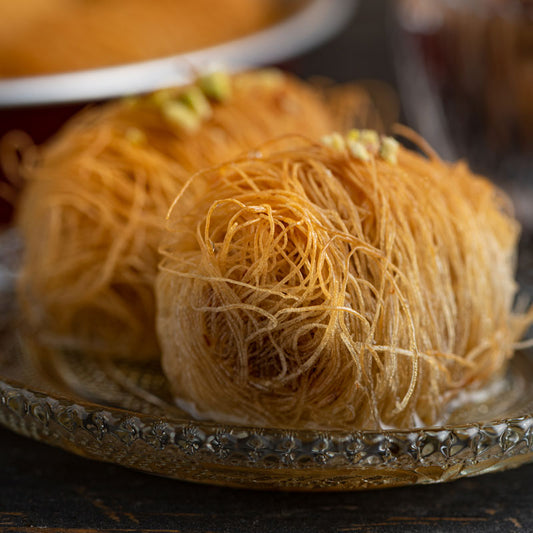Christmas time
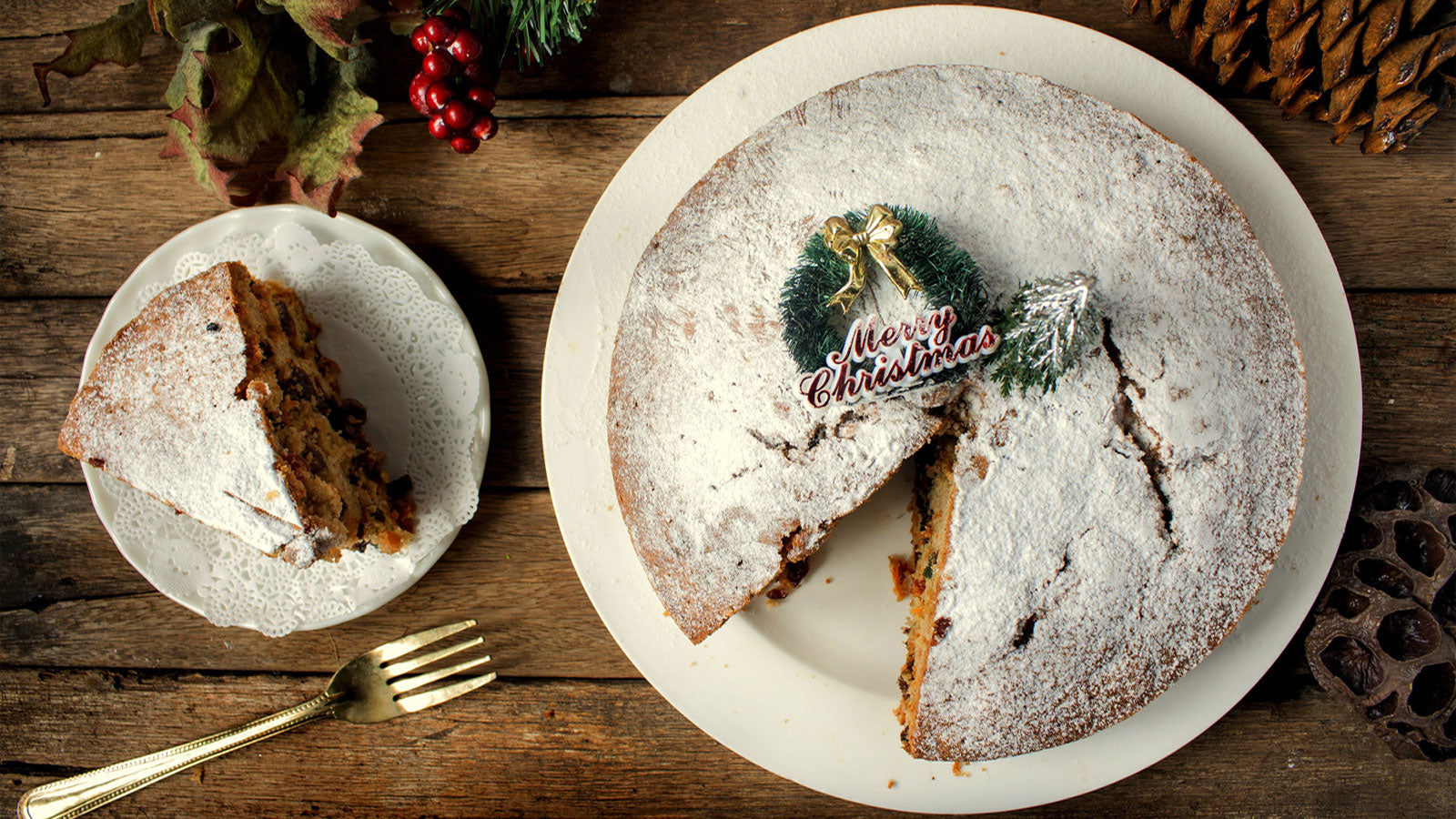
- Vasilopita
The Vasilopita is the symbol of the New Year and is associated with the feast of St. Basil, from which it took its name. It is the second favorite dessert (after the melomakarona and the kourabiedes) that everyone is looking forward to eating at Christmas time. The form in which we can find it varies. It is made mainly with flour, eggs, sugar and milk and the number of the New Year is written on its surface. The vasilopita is traditionally cut on New Year's Day by the landlord of the house and then he offers it to the guests. It is one of the favorite sweets of young and old and is something that everyone expects as soon as the year changes. Inside this delicious cake we usually place a charm, known as "coin", which is said that whoever wins it will be lucky for the rest of the year.
How did the custom of Vasilopita come about?
Saint (or otherwise Great) Basil was bishop of Caesarea. When the governor of Cappadocia went there to collect taxes, wanting to leave it, the inhabitants were afraid and asked for the protection of their bishop. He asked them to collect valuable items to offer to the prefect. However, the Saint managed to persuade him to leave without taking anything. Because the return of the objects to their owners was practically impossible as the bishop did not know what belonged to each of them, small pies (placentas) were kneaded and a valuable object was placed inside them. The distribution took place and, as if by a miracle, what he had given happened to everyone. Since then, according to tradition, we make pies with coins inside on the feast of St. Basil. Thus, the custom of the royal pie was established.
It is not Christmas in Greece until the pastry chefs start baking melomakarona, kourabiedes and diples.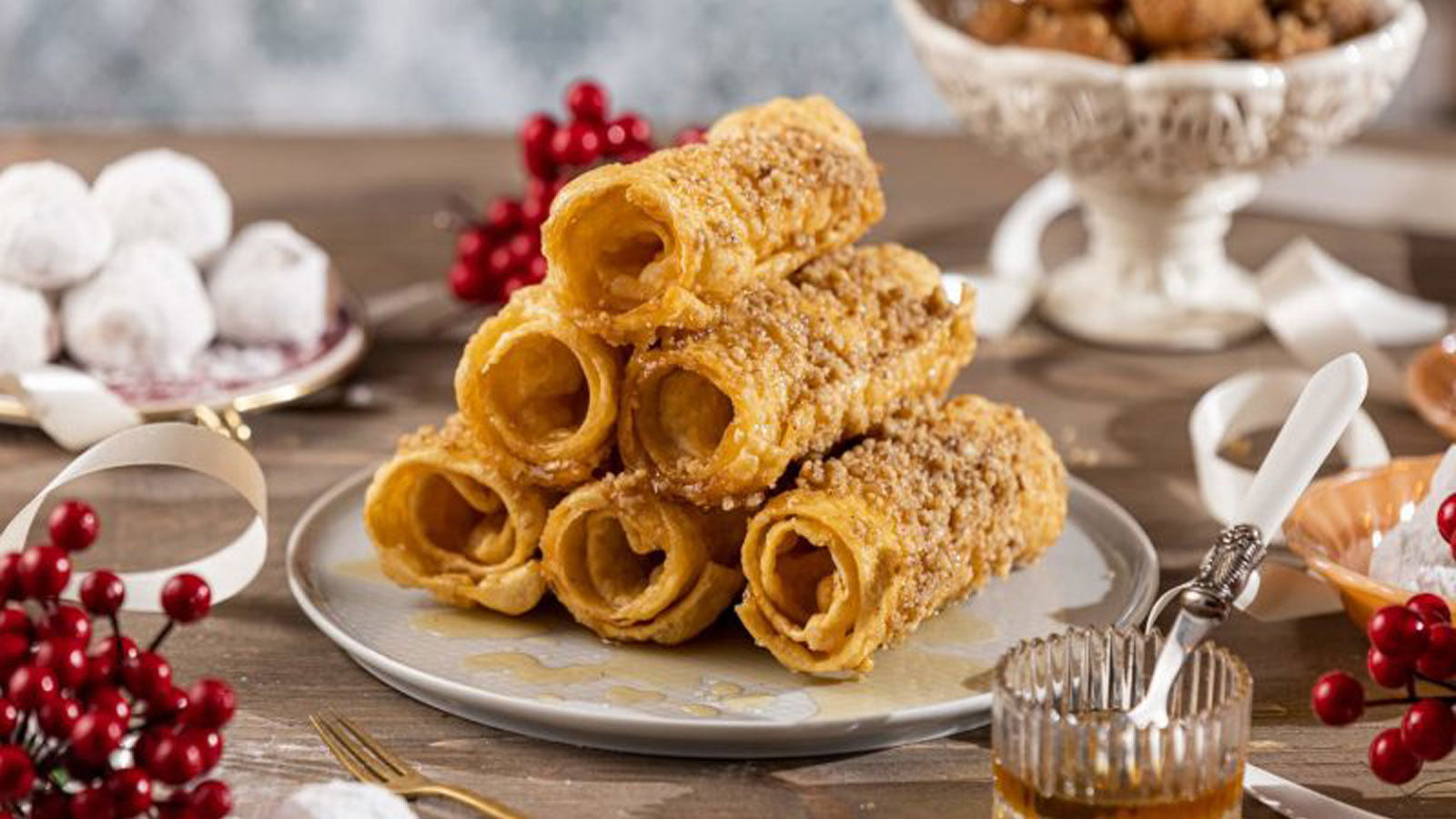
- Melomakarona
Melomakarona are probably the most popular and world-famous Christmas sweets! Etymologically they have ancient Greek origin from the Greek word "macaronia", which is a funeral dinner based on pasta, where they blessed the dead. Spaghetti in turn comes from the ancient Greek word "macaroni", a piece of bread in the shape of modern melomakarono, which was offered after the funeral. Today, with the prefix "melo" which essentially means "honey", these cookies soaked in honey syrup, have lost all shades of mourning and sadness and rightly claim their place at the festive table. Many may claim that melomakarona is a high-calorie dessert! Maybe they have not tried the traditional Greek kourabiedes then.
Tip : Try the melomakarona with chocolate! They will drive you crazy. Make the melomakarona according to our recipe and then just melt one or two (depending on the quantity) couvertures in a baking pan or in a microwave oven and cover or dip the melomakarona in the chocolate!
- Kourabiedes
Kourabiedes (kourabies in the singular) are butter cookies with almonds, sprinkled with powdered sugar that are traditionally prepared at Christmas. In many parts of the country they are offered to guests immediately after baptism or wedding. Its name comes from the Persian Qurabiye, which means cookie, sweet based on flour, butter and powdered sugar. In Greek kourabies literally means Kuru = dry, biye = biscuit. Nowadays, it is a "dry cookie" to which almonds, walnuts and plenty of powdered sugar have been added to make it one of the favorite Christmas sweets. There are many who claim that chocolate chip cookies are the sweet of Christmas and Santa Claus and not melomakarona. There is we would say an ongoing and long-standing dispute between these two sweets!
See our kourabiedes recipe and learn how you can make your own Greek traditional cookies.
- Diples
Diples is a Greek dessert, where its main ingredient is a thin crispy dough. The diples are said to have originated in the Peloponnese. This is a well-known traditional, Messinian dessert. The dough is folded into various shapes, fried in hot oil and finally soaked in syrup. Traditionally, honey is used instead of syrup and the doubles are flavored with cinnamon, while chopped walnuts are added. The doubles symbolize the nappies of Christ and as in the melomakarona, the honey symbolizes the well-being and the creation that we want the new year to bring us. They are served on New Year's Eve, but also at weddings, engagements and baptisms.
- Greek Pancakes or Nappies of Christ
The most important custom of Epirus, which is even mentioned in the local carols, are the nappies of Christ, basically pancakes baked without oil on the stone! They are a delicious local dessert, honeyed with sugar water and sprinkled with walnuts and cinnamon. They were made mainly on Christmas Eve, when the whole family was gathered near the lit fireplace. The pancakes, thin as crepes, were covered until they were all cooked to stay, as long as they were soft. The result was a delicious "stack" of pancakes baked in the fireplace on hot stone. Do not hesitate to try it in a non-stick pan!
Easter time
On Easter days, it is difficult to find a home without fluffy tsoureki and fragrant cookies. Even if one recipe differs from the other, these two sweets share a common feature, that of their braid-like shape, which is said to ward off evil spirits.
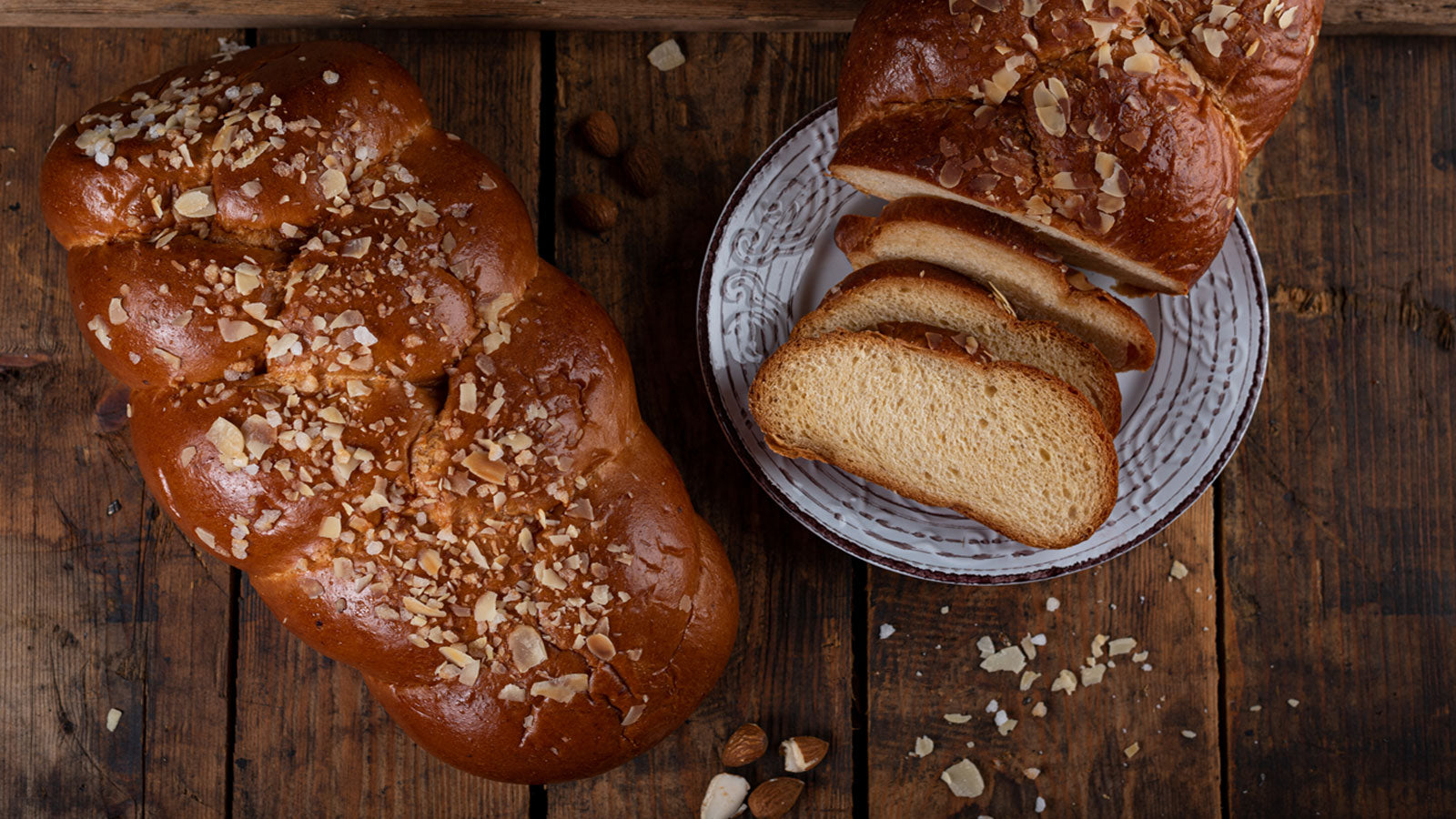
- Easter Tsoureki & Cookies
In Greece, tsoureki is the sweet bread prepared all year round and especially at Easter and Christmas. The name "tsoureki" was probably adopted by the Greeks during the Turkish occupation and since then they began to make their own version of a sweet bread made with milk, butter and eggs. It is also called Lambrokouloura or Lambropsomo, however the word tsoureki has prevailed. The tsoureki is symbolic, because it represents the symbol of the rebirth of life, the resurrection of Christ, as the flour "comes to life", "takes shape and life" and is transformed into bread.
The shape of the Easter tsoureki varies depending on the local traditions. The best known is of course the braid, with or without a red egg. You can enjoy the traditional tsoureki in various flavors. The most popular and favorite are the tsoureki stuffed with chocolate, with chestnut, but many are also fans of the politiko tsoureki, which has a special taste that is equally tasty and enjoyable.
Along with the creation of tsoureki, all over Greece, we knead cookies in various designs and flavors (you can give an even sweeter taste by adding pieces of chocolate).
You can find the traditional Greek tsoureki ready to enjoy.

- Lagana
Lagana is a unleavened bread, made without yeast. This bread symbolizes, according to tradition, the help that God offered to the Israelites with the "unleavened bread" and led them to the Exodus from Egypt.
The name "Clean" came from the habit of housewives in the morning of this day, to wash all cookwear with hot water and ashes. Then they hung them in their place where they remained until the end of the fasting.
The traditional lagana recipe only needs flour, water, salt, herbs for aroma and, of course, plenty of white sesame. At the table on Clean Monday it is accompanied mainly by various traditional salads, such as tzatziki, taramosalata, garlic skordalia, etc. Also the favorite accompaniment of Lagana is none other than halva.
- Halva
Among the foods that can not be missing from the festive table of Clean Monday is halva. The usual halva in the form that we find in all the Balkans and Turkey is a simple dessert. It is consumed every day of the year, however it is preferred on Clean Monday for the simple reason that it is suitable for fasting. The creation of Halva presupposes the roasting of semolina, which is then sweetened with either honey or "petimezi" grape must syrup. It does not contain ingredients / foods that are not allowed during fasting and that is why it is the favorite snack for the days of Lent. For the Greeks, halva is one of their Lent sweets and a favorite is the variation made with tahini. This type of halva is called Macedonian Halva. Macedonian Halva is now available everywhere and in many different flavors: with chocolate, with almonds etc.
You can find on our site a large variety of traditional Greek halva.

